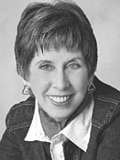
More Mental Health Articles
Meditation Is For Everyone
Meditation is not just for young people or persons living in monasteries or ashrams; the practice is good for everyone. Even though long-term meditators are reported on in the media as having peaceful dispositions, compassionate feelings and loving messages (such as the Dalai Lama or Thich Nhat Hanh) these qualities are available to anyone who starts a meditation practice at any age.
Many of the physical and mental health problems that come up for senior citizens can be helped by learning meditation. A daily meditation period not only helps people deal with insomnia, mild depression, and fuzzy thinking but it can actually eliminate these problems. The quiet time spent relaxing and looking inside often leads meditation to find a strong connection to the spiritual or religious beliefs that have comforted them over their lifetime.
An essential element of meditation is relaxation. Several techniques are available. Examples include sequential muscle relaxation, progressive relaxation through guided imagery, and a physical positioning/structural method.
For the muscle relaxation method the subject sits comfortably in a dark, quiet room. He or she then tenses a group of muscles, such as those in the right arm, holds the contraction for 15 seconds, and then releases it while breathing out. After a short rest, this sequence is repeated with another set of muscles. Gradually, different sets of muscle are combined until the whole body feels relaxed.
Visualization and imagery techniques make up another relaxation method as in guided imagery. For example, an instructor suggests imagining a comforting place, such as the beach, a grassy hill overlooking a green valley with a small village, or the comfy chair in Grandmothers living room. The lulling effect of this guidance is similar to that found in hypnosis.
The structural method involves adopting body positions that are opposite to those associated with anxiety (fingers spread rather than hands closed, for example, or mouth slightly open instead of jaw tightly clenched). In training sessions subjects concentrate on experiencing physical sensations, such as warmth in different parts of their bodies in a sequence related to the anatomy (heart and circulation, brain and nerves, muscles, or joints and bones). Muscle relaxation is encouraged.
Other methods encourage “detached observation,” aware of the environment but not involved in thinking about it. One way to do this is deepening and slowing the inhale breath and making a conscious attempt to let go of tension during exhalation. The idea is to concentrate on the breath, feeling the sensations of air moving in and out of the body. Using either of these techniques a meditator can reach a state of deeply relaxed alertness.
With meditation one can substitute positive, joyful thoughts for the worries that lead to agitation, frustration, and annoyance. In addition, if these emotions are allowed to continue over long periods, they can intensify any leanings toward depression and anxiety. Once a person knows and believes this fact and begins to change their thoughts about life they can establish a comfortable outlook on life.
Other Articles You May Find of Interest...
- Embracing Healing: Navigating the Emotional and Physical Journey of Mastectomy Recovery
- Understanding the Role of Support Groups in Personal Development
- Ways To Check On a ‘Mama’ In Your Life
- How to get rid of stress
- The Impact Of Mental Illness
- Healthy Mind In a Healthy Body
- 10 Summer Bucket List Ideas For 2024

















